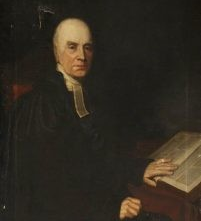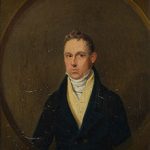History
Rev. Robert Harris
|
Edmund Robert Harris
|
On Wednesday, May 30, 1877, the Preston Guardian newspaper announced the death of local solicitor and former Prothonotary for Lancashire, Edmund Robert Harris aged 73, He had died the previous Sunday morning at his residence, Whinfield House, Ashton-on-Ribble.
For several years he had failing health and had been forced to relinquish the more active duties of his life. During the early Spring of his final year his health had seemed to take a turn for the better. However, towards the end of May he caught a chill and suffered a bronchial condition, leading to his death.
The Harris family connections with the town of Preston began in 1788, when the Rev Robert Harris BD was appointed headmaster of Preston Grammar School, which in those days was in Stoneygate. On average, the school had forty scholars and the new headmaster received an annual salary of about £100.
The son of a goods carrier, he was born in Clitheroe in 1764 and was educated at Clitheroe Grammar School and at Sidney College, Cambridge. He soon became a member of the inner circle of the gentry, as his select membership of Preston’s Oyster and Parched Pea club confirmed.
Chapter Two: ‘Parson’ Harris
In 1797 he was appointed Rector of St George’s Church, combining his duties with his role as headmaster of the town’s leading education establishment. The congregation had a great affection for him and was known by the humbler classes as ‘Parson’ Harris.
Around the turn of the century he married a local girl Ann Lodge, the sister of two of Preston’s most prominent solicitors, Edmund and Jonathan Lodge, and the couple had four children. Although the first died in infancy, two sons and a daughter followed.
To secure the future of his sons he arranged for them to serve apprenticeships with their uncle’s firm of solicitors, originally in the Old Cock Yard.
The placement was a success and both later became partners. The firm Lodge and Harris, took over premises in Chapel Street. Originally the Harris household resided at what is currently known as Arkwright House in Stoneygate, which had been built in 1728 to house the headmaster of the Grammar School. When he relinquished control of the school in 1835, he was obliged to vacate those premises and the family moved to 16 Ribblesdale Place.
It was whilst renting rooms at Arkwright House that in 1768 Richard Arkwright invented the Waterframe, which laid the foundation for the success of the Lancashire Cotton Industry.
Chapter Three: Harris Family Grief
Following the death of his wife a couple of years later, the family moved to 13 Ribblesdale Place. All continued well until 1849, when the Rev Harris devoted daughter died in her 43rd year.
The Vicar deeply felt the loss of his daughter and his health declined for some time afterwards. As incumbent of St George’s he continued to minister to his congregation and among the gifts bestowed upon him were silverware and oil paintings of himself.
One of his most outstanding sermons was on Christmas Day, 1861, during the cotton famine. It was to be the last message from the town’s oldest inhabitant, 12 days later he died.
The Vicar’s wealth was distributed among his sons, Edmund Robert and Thomas Harris. When Thomas died in 1875, Edmund, already a successful lawyer, inherited the entire family fortune.
Edmund Robert Harris preferred to walk the secluded paths of life rather than tread the thoroughfares that lead to fame and glory. He had already shown his benevolent nature by providing the money for the Harris Infectious Ward, a crucial part of the town’s Infirmary.
Edmund made his will twelve months before he died and rumour was rife as to the money would go.
Chapter Four: The Will
Practically the whole of the fortune was devoted to religious, educational and philanthropic causes. He bequeathed a gift of £122,000 to build The Harris Free Library, Art Gallery and Museum. Preston Corporation provided the site adjacent to the Market Place for £30,000 and furnished it with the books of the existing Free Library and of Dr Shepard’s reference library.
The art collection and museum from the old Literary and Philosophical Institute was also centralised and the Corporation agreed to maintain the building and its contents.
A further £100,000 was used to establish the Harris Orphanage, which opened in Fulwood, in 1888 while the third main beneficiary of £78,000 went to the Harris Institute and Technical College, now the University of Central Lancashire.
All in all, with bequests to servants, clerks and friends, the fortune of one of Preston’s greatest benefactors amounted to more than £300,000.
Chapter Five: Harris Orphanage
From 1888 to 1982, the Harris Orphanage served Preston and its surrounding community. Over the years, a succession of Governers managed what was likened to a village designed to an original idea of Dr Barnardo, with houses around a ‘village green’.
The orphanage provided homes for up to 120 boys and girls, whose parents had lived within eight miles of Preston for at least a year.
Children who grew up in the Harris Orphanage came to look upon the Governor as family and many including Captain Watkins in the 1950’s and Jim Brookes in the 1970’s and 80’s, were well regarded for their caring manner. Many Governors relied on their wives for support and the death of Mrs Eileen Brooks in 2007 brought to an end the connection with the orphanage’s former staff.
Chapter Six: New Owners
Preston Polytechnic, which was formely the Harris Technical College, bought the site from the Trustees of The Harris Charity in 1985 for use as student accomodation. Subsequently its successor, The University of Central Lancashire, developed the buildings as “The Harris Knowledge Park” which was opened in 2000.
In December 2006 the University sold the whole site to a local family.

 harrischarity@mha.co.uk
harrischarity@mha.co.uk 




